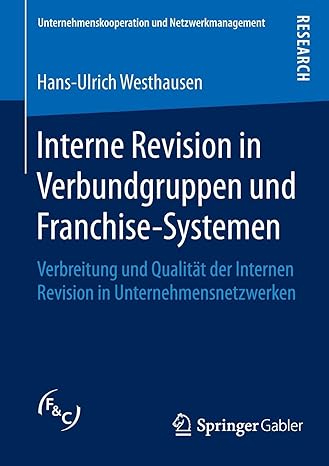Question
London-based Reuters is a respected company. Established in 1850 and devoted to delivering information around the world by the fastest means available which in 1850
London-based Reuters is a respected company. Established in 1850 and devoted to delivering information around the world by the fastest means available which in 1850 meant a fleet of 45 carrier pigeons by the late 1990s the company had developed into one of the largest providers of information in the world. Although Reuters is know best to the public for its independent, unbiased news reporting, 90 percent of Reuters revenues are generated by providing information to traders in financial markets. In the 1990s the company used a proprietary computer system and a dedicated telecommunications network to deliver real-time quotes and financial information to Reuters terminals devices that any self-respecting financial trader could not function without. When Reuters entered the financial data business in the early 1970s, it had 2,400 employees, most of them journalists. By the late 1990s its employee base had swelled to 19,000, most of whom were on the financial and technical side. During this period of heady growth Reuters amassed some 1,000 products, often through acquisitions such as foreign-language data services, many of which used diverse and sometimes incompatible computer delivery systems.
The late 1990s were the high point for Reuters. Two shocks to Reuters business put the company in a tailspin. First came the internet, which allowed newer companies, such as Thomson Financial Services and Bloomberg, to provide real-time financial information to any computer with an internet connection. Suddenly Reuters was losing customers to a cheaper and increasingly abundant alternative. The Internet was commoditizing the asset on which Reuters had built its business: information. Then in 2001, the stock market bubble of the 1990s finally broke; thousands of people in financial services lost their jobs; and Reuters lost 18 percent of its contracts for terminals in a single year. Suddenly a company that always been profitable was losing money.
In 2001, Reuters appointed Tom Glocer as CEO. The first non-journalist CEO in the companys history, Glocer, an American in a British-dominated firm, was described as not part of the old boys network. Glocer had advocated that Reuters move to an internet-based delivery system. In 2000, he was put in charge of rolling out such a system across Reuters but met significant resistance. The old proprietary system had worked well, and until 2001 it had been extremely profitable. Many managers were therefore reluctant to move toward a web-based system that commoditized information and had lower profit margins. They were worried about product cannibalization. Glocers message was that if the company didnt roll out a web based system, Reuters customers would defect in droves. In 2001, his prediction seemed to be coming true.
Once in charge, Glocer again pushed an internet based system, but he quickly recognized that Reuters problems ran deeper. In 2002, the company registered its first annual loss in history, 480 million, and Glocer described the business as fighting for survival. Realizing that dramatic action was needed, in February 2003, Glocer launched a three-year strategic and organizational transformation program called Fast Forward. It was designed to return Reuters to profitability by streamlining its product offering, prioritizing what the company focused on, and changing its culture. The first part of the program was an announcement that 3,000 employees (nearly 20 percent of the workforce) would be laid off.
To change its culture Reuters added an element to its Fast Forward program known as Living Fast, which defined key values such as passion and urgency, accountability and commitment to customer service and team. A two-day conference of 140 managers, selected for their positions of influence and business understanding rather than their seniority, launched the program. At the end of the two days the managers collectively pledged to buy half a million shares in the company, which at the time were trading at an all-time low.
After the conference, the managers were fired up; but going back to their regular jobs they found it difficult to convey that sense of urgency, confidence and passion to their employees. This led to the development of a follow-up conference: a one-day event that included all company employees. Following a video message from Glocer and a brief summary of the goals of the program, employees spent the rest of the day in 1,300 cross-functional groups addressing challenges outlined by Glocer and proposing concrete solutions. Each group chose one of Toms challenges to address. Many employee groups came up with ideas that could be rapidly implemented and were. More generally, the employees asked for greater clarity in product offerings, less bureaucracy, and more accountability. With this mandate managers launched a program to rationalize the product line and streamline the companys management structure. In 2003, the company had 1,300 products. By 2005, Reuters was focusing on 50 key strategic products, all delivered over the web. The early results of these changes were encouraging. By the end of 2004, the company recorded a 380 million profit, and the stock price had more than doubled.
THIS CASE INCORPORATES MULTIPLE CHAPTERS TO ANALYZE
USE SUB-HEADINGS
INTRODUCTION/PROBLEM (10 MARKS)
ANALYSIS (20 MARKS)
RECOMMENDATIONS (10 MARKS)
CONCLUSION (10 MARKS)
Step by Step Solution
There are 3 Steps involved in it
Step: 1

Get Instant Access to Expert-Tailored Solutions
See step-by-step solutions with expert insights and AI powered tools for academic success
Step: 2

Step: 3

Ace Your Homework with AI
Get the answers you need in no time with our AI-driven, step-by-step assistance
Get Started


